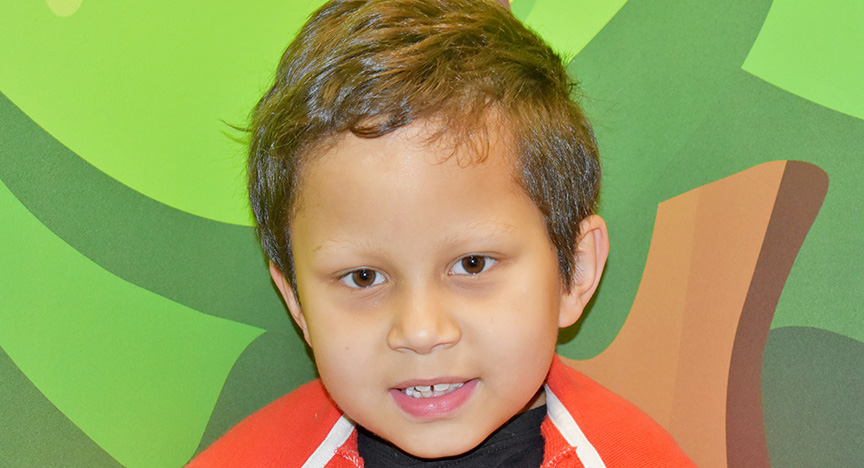
Like most seven-year-olds, Jarvis, of Mt Gravatt, just wants to run, jump and play but he lives with a very rare condition that makes physical activity challenging and painful. At the age of two, Jarvis was diagnosed with Fibrodysplasia Ossificans Progressiva (FOP), a rare genetic disease caused by a mutation of the body’s repair mechanism that causes bone to grow over tendons, ligaments and muscles. It effectively creates a second skeleton that significantly affects mobility. Only 17 other people in Australia are known to have the condition, and 800 worldwide. There is currently no cure and injuries are managed with pain medication and steroids to reduce inflammation.
“We knew something was wrong when Jarvis was born with malformed toes,” Jarvis’s mum, Lara, said. Lara and Jarvis’s dad Damien would later learn that this is often one of the first signs of FOP. Due to the rarity of the condition, doctors were initially unsure of what they were dealing with and it was only after extensive testing that they were able to confirm a diagnosis of FOP.
Living with FOP isn’t easy and it prevents Jarvis from doing lots of simple everyday things that most of us take for granted.
“Jarvis cannot move his arms above his head, so he can’t reach to grab things that are too high. He can’t move his neck very well so he can’t look up. His body tires quickly and he needs to rest frequently. And he always has to be extra careful because any kind of trauma can trigger new bone growth.”
“Although he can’t play sport in case of injury, he is a great little kicker, so we try to play with him as much as possible,” Lara said.
Despite the many ‘can’ts’ in his life, Jarvis makes the most of everything he can do.
“He’s a musical soul and loves playing the drums for us. He listens to The Bee Gees and The Beatles. And he loves to bust a move to Michael Jackson.”
He also loves school, and is doing just fine with the help of a carer to watch him and assist if he falls.
“The best thing that ever happened to us was starting rheumatology treatment at the Queensland Children’s Hospital. Coming under the care of Dr Whitehead and his team has been very comforting… they are an amazing team and we would truly be lost without them,” Lara said.
Jarvis currently has regular check-ups every six months, and the occasional extra visit if he has a bad flare-up of the disease which is caused by swelling from an injury.
While there is no cure, Lara and Damien hope that new drugs will help slow the progression of Jarvis’s disease.
“Jarvis has taught us so much in his seven years on this earth. He is incredibly resilient, which helps him face the challenges he does. He’s also a bit of a comedian and constantly makes us laugh. I often look at him and think if he can cope, then so can I.”